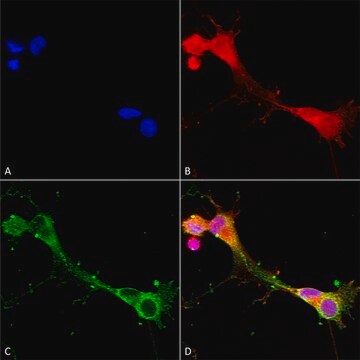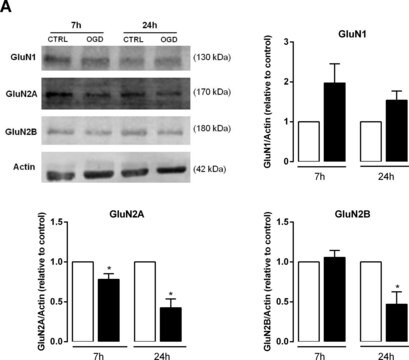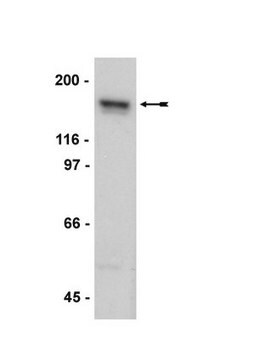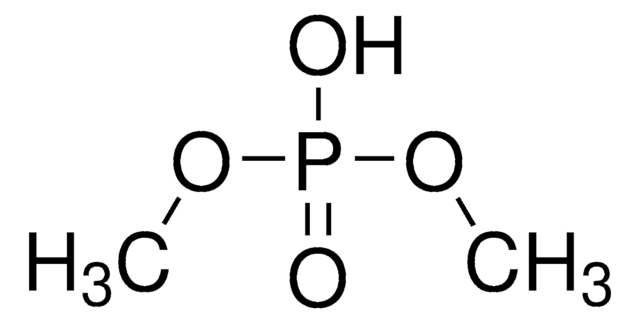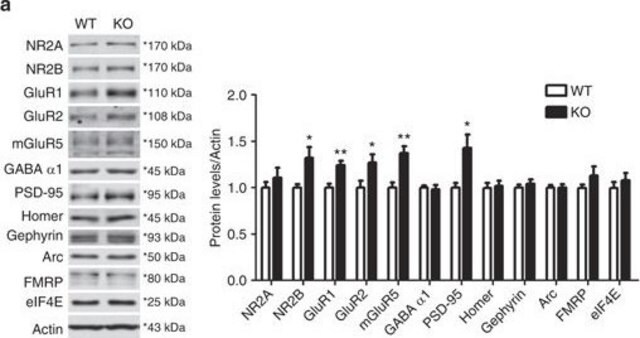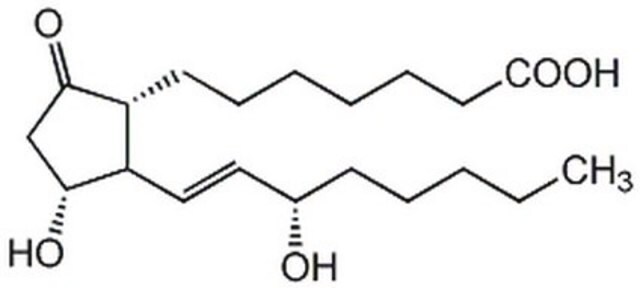AB1555
Anti-NMDAR2A Antibody
serum, Chemicon®
Sinonimo/i:
Anti-EPND, Anti-GluN2A, Anti-LKS, Anti-NMDAR2A, Anti-NR2A
About This Item
Prodotti consigliati
Origine biologica
rabbit
Livello qualitativo
Forma dell’anticorpo
serum
Tipo di anticorpo
primary antibodies
Clone
polyclonal
Reattività contro le specie
fish, human, rat, mouse
Produttore/marchio commerciale
Chemicon®
tecniche
immunoprecipitation (IP): suitable
western blot: suitable
Compatibilità
not suitable for immunohistochemistry
N° accesso NCBI
N° accesso UniProt
Condizioni di spedizione
dry ice
modifica post-traduzionali bersaglio
unmodified
Informazioni sul gene
human ... GRIN2A(2903)
Specificità
Immunogeno
Applicazioni
Neuroscience
Neurotransmitters & Receptors
* See suggested protocol
Immunoprecipitation using solubilized hippocampal slices. 3μL will (under appropriate conditions) quantitatively immunoprecipitate all NMDAR2A in 200μg rat brain.
Not suggested for use in immunohistochemistry.
Optimal working dilutions must be determined by the end user.
Stato fisico
Stoccaggio e stabilità
Risultati analitici
NMDAR2A is present in high concentrations in the hippocampus
Note legali
Esclusione di responsabilità
Non trovi il prodotto giusto?
Prova il nostro Motore di ricerca dei prodotti.
Raccomandato
Codice della classe di stoccaggio
10 - Combustible liquids
Classe di pericolosità dell'acqua (WGK)
WGK 1
Punto d’infiammabilità (°F)
Not applicable
Punto d’infiammabilità (°C)
Not applicable
Certificati d'analisi (COA)
Cerca il Certificati d'analisi (COA) digitando il numero di lotto/batch corrispondente. I numeri di lotto o di batch sono stampati sull'etichetta dei prodotti dopo la parola ‘Lotto’ o ‘Batch’.
Possiedi già questo prodotto?
I documenti relativi ai prodotti acquistati recentemente sono disponibili nell’Archivio dei documenti.
Il team dei nostri ricercatori vanta grande esperienza in tutte le aree della ricerca quali Life Science, scienza dei materiali, sintesi chimica, cromatografia, discipline analitiche, ecc..
Contatta l'Assistenza Tecnica.